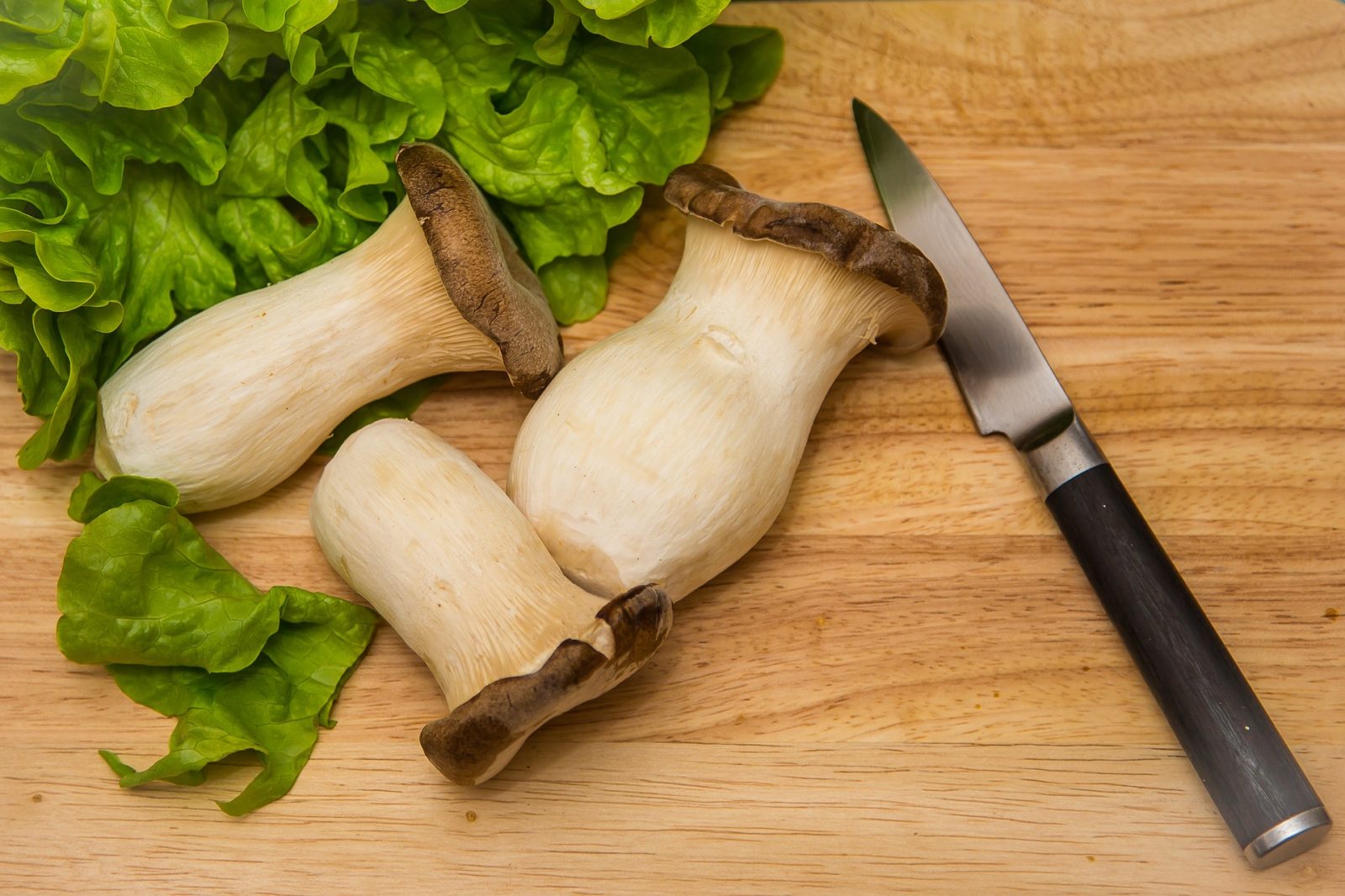The largest of the oyster mushrooms, hence its’ name, King Oyster is taking the culinary world by storm. Recent innovations in home-growing of this stunning and delicious mushroom are making it more widely available and for that, we should celebrate.
Appearance
This mushroom has the classic mushroom-look: long stem with a cap slightly wider than the stem sitting on top. The cap is small and brown and sits on top of the thick, long, white stem like a little derby hat. The stem is what makes this mushroom special and so highly prized. It averages 3-5” long and is dense and firm.
Taste & Texture
This stout, meaty mushroom tastes woodsy and sweet when cooked. Many people describe the flavor as umami and it is commonly said to taste like abalone. It remains firm when it is cooked. The raw mushroom is bland and unsatisfactory.
Cooking with King Oyster
If you are new to the King Oyster, the best way to prepare it is to lightly saute it in oil or butter and season with salt and pepper. This simple method highlights the flavor and meaty texture. King Oyster is used often as a meat substitute because of its texture and the way it holds up under a variety of cooking methods. It can be grilled, stir-fried, or sauteed. The stem can be sliced into large rounds and cooked like scallops.
Where to Find
Many grocery chains are now carrying King Oyster. Look for it in the fresh produce isle. It is usually packaged in a plastic, breathable square basket, like the type tomatoes come in. The mushrooms should have firm, unblemished stems. The size of the mushroom doesn’t impact the taste much. If there is any dirt on them, that is fine, just brush it off lightly before using.
